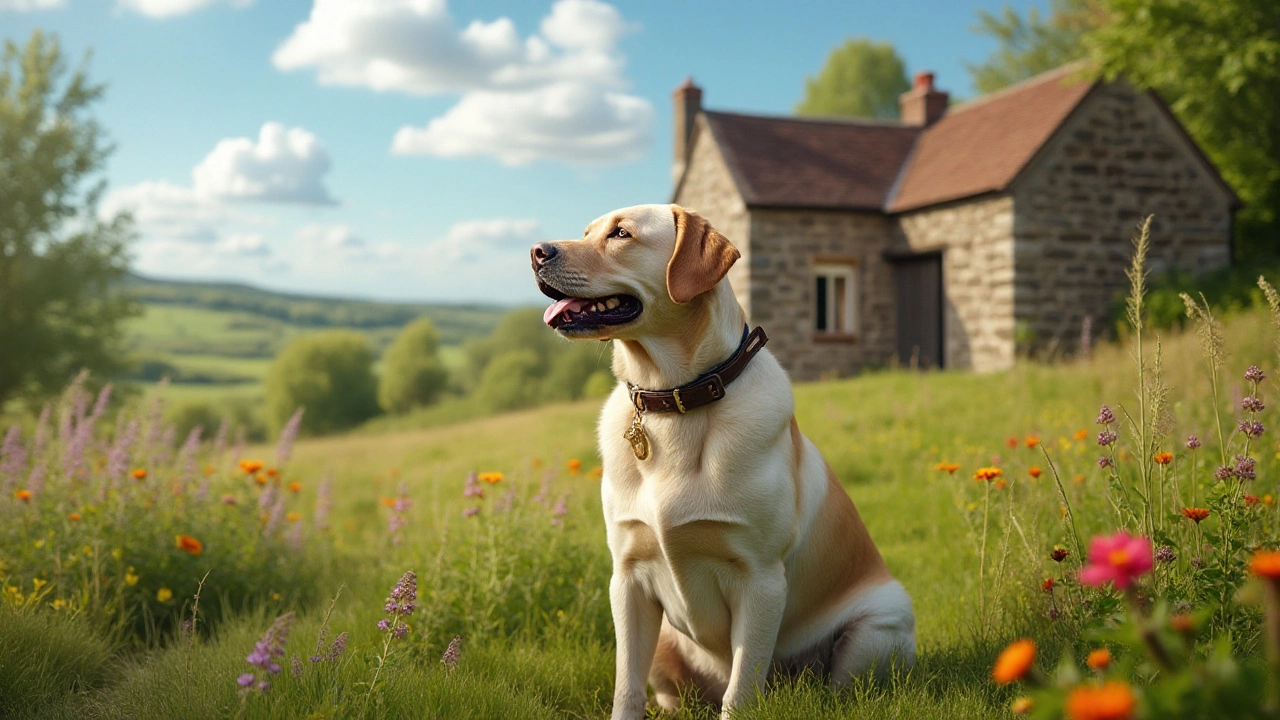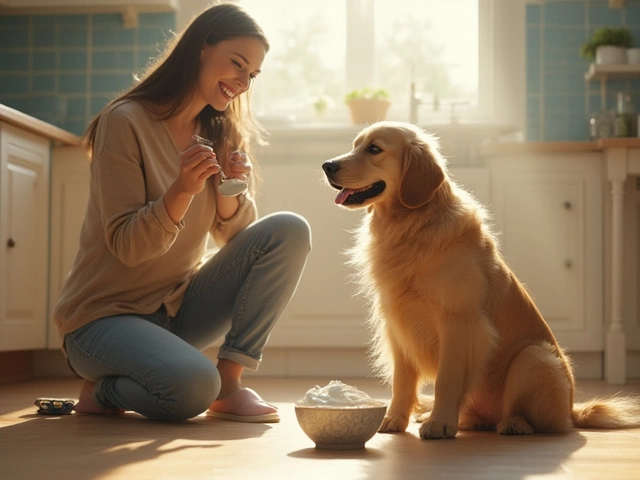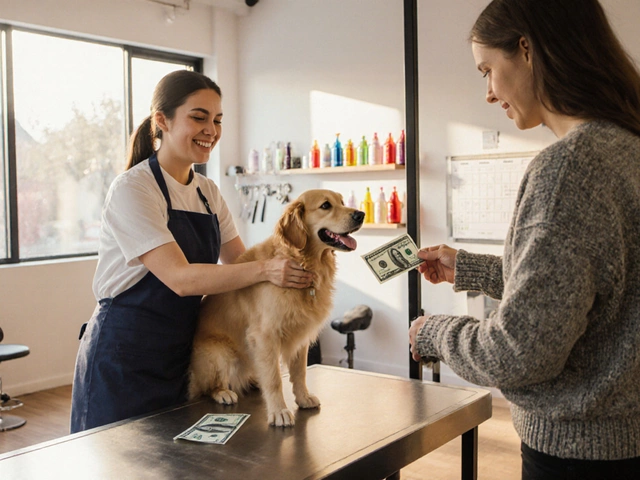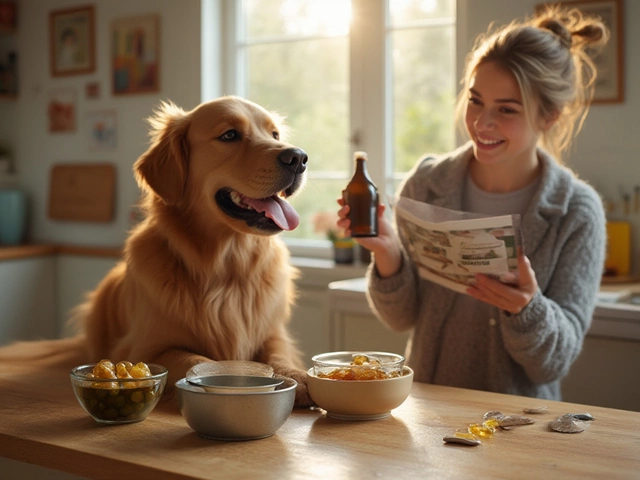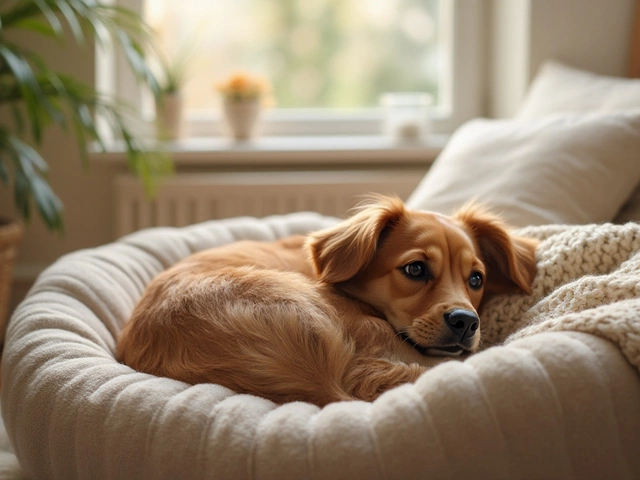For many dog owners, collars are as much a part of their pets' identity as their name. Often more than a simple accessory, collars are vital for ensuring a dog's safety and accountability. But does the constant presence of a collar invite any discomfort for our canine companions?
The first step to addressing this concern is understanding why dogs wear collars in the first place. Primarily used for identification and control, collars can be fitted with tags containing essential information, such as the owner's contact details. This ensures that if a dog becomes lost, they have a better chance of being returned safely.
The next consideration is choosing the right collar. Like humans with shoes or clothes, each dog has different needs regarding comfort. A collar that fits one dog like a glove might not be as comfortable on another. In the upcoming sections, we'll explore how to ensure your dog's collar is a source of comfort, rather than an irritant.
- The Purpose of a Dog Collar
- Choosing the Right Collar
- Signs of Discomfort
- Maintaining a Dog's Collar
- Alternatives to Traditional Collars
The Purpose of a Dog Collar
Dog collars have evolved beyond mere ornamental purposes; they are fundamental to a dog’s day-to-day safety and management. At a glance, they might seem just like a part of your pet’s attire, but these nifty accessories hold vital functions. Collars primarily serve as a quick and reliable means of identification. Pet owners often attach tags displaying their contact information, ensuring that if the dog wanders off, they can swiftly be reunited. This seemingly simple measure can prevent stressful situations and heartache both for the pet and owner. In fact, according to the American Humane Association, it’s estimated that getting lost is one of the leading risks faced by dogs, and identification tags dramatically increase the likelihood of them being found.
Collars are also instrumental in training and managing dogs in various environments. Introducing a leash connected to the collar provides a controlled way for owners to guide their dogs, especially valuable in busy urban settings or during training sessions. Behavioral cues given through a gentle tug on the leash can help dogs learn commands and establish good walking habits. For many, leash training is an essential component of a dog’s early education, setting the foundation for a harmonious relationship between the pet and owner.
While practicality is at the heart of why collars are so universally utilized, one must not overlook the importance of choosing the right type and material. Different materials like leather, nylon, or even eco-friendly options cater not only to aesthetic preferences but also to the tactile comfort of the dog. Pet collars made from soft yet durable materials prevent chafing and ensure a better fit, complementing a dog’s daily activities without causing discomfort. A collar that is too tight can restrict breathing and cause skin irritations, whereas one that is too loose might easily slip off, thus defeating its purpose entirely. It's a delicate balance, but when struck correctly, a collar can be a convenient and comfortable companion for the dog.
Besides the basic collar, the market offers variations like harnesses and head collars, which focus on reducing tension and strain, especially for larger or more active dogs. While these alternatives might provide more comfort during high-energy activities, the standard collar remains an essential staple, a place for ID tags and rabies vaccination tags that signal a pet’s health status. Veterinarians frequently recommend keeping these items on at all times, similar to how we utilize identification cards.
"A dog tag is more than just an accessory; it's a lifeline to ensure lost pets make their way back home," says Dr. Emily Thompson, a leading expert in canine health.
Ultimately, the purpose of a dog collar is rooted in functionality and the gentle care for our furry friends. Understanding its significance can help pet owners make informed decisions, selecting collars that align with their dog's needs and their lifestyle. As a pet owner, valuing the dual role of comfort and safety tied up within a simple strip of material can play a critical part in crafting a nurturing environment for their beloved companion.
Choosing the Right Collar
Finding the perfect collar for your pet is akin to selecting a comfortable pair of shoes for yourself. It should not only fulfill its purpose but also cater to the unique needs of your dog, ensuring their comfort and safety at all times. The variety of dog collars available today can be overwhelming, yet this abundance provides an opportunity to select what truly suits your dog’s personality and lifestyle. One of the primary things to consider is the material of the collar. From leather to nylon, and even neoprene, each material has its benefits and potential drawbacks. For instance, nylon collars are lightweight and come in a wide array of patterns, making them a popular choice for everyday use. Leather, on the other hand, offers durability and a classic aesthetic, though it's crucial to ensure it's flexible enough for comfort.
The right fit is more important than most realize. Experts use a simple but effective method to check the fit: the two-finger rule, where you should be able to comfortably slide two fingers between the collar and your dog's neck. This ensures the collar isn't too tight, which could hinder breathing or cause skin irritation, or too loose, which risks slipping off easily. This fit allows collars to serve their primary purpose of providing a secure way of attaching identification and other crucial tags. In addition to size, the style of collar can play a significant role in a dog’s comfort. Flat collars are often recommended for everyday use because they’re simple and comfortable for dogs to wear. Meanwhile, slip or chain collars should be used with caution and understanding of their functionality.
Given the range of collars available, there's also room to explore specific options like reflective collars which are ideal for dogs who enjoy evening walks. These collars help increase visibility during dusk or dawn, which is crucial for safety. Some collars even have breakaway features that can protect dogs in the event they get snagged on something during play. Customization can go beyond aesthetics and extend to functional needs, such as anti-pull or anti-bark designs. However, as the American Veterinary Society of Animal Behavior suggests, “Collars should be used primarily for identification, with training tools carefully selected to meet an individual dog’s needs.”
The late Dr. Sophia Yin, a renowned veterinarian, once noted, "A collar that fits well is like wearing a good pair of shoes – unnoticed when right, unbearable when wrong."
Taking all these elements into account ensures you provide your pet with a collar that’s more than just a piece of equipment. It's a crucial part of their well-being. Measuring your dog's neck correctly and considering their daily activities can significantly influence your choice. It’s not just about aesthetics; it’s about ensuring the health and happiness of your canine companion. Investing time in finding the perfect dog collar comfort can make a world of difference in your dog’s life. After all, a happy dog is a source of joy for any pet owner!
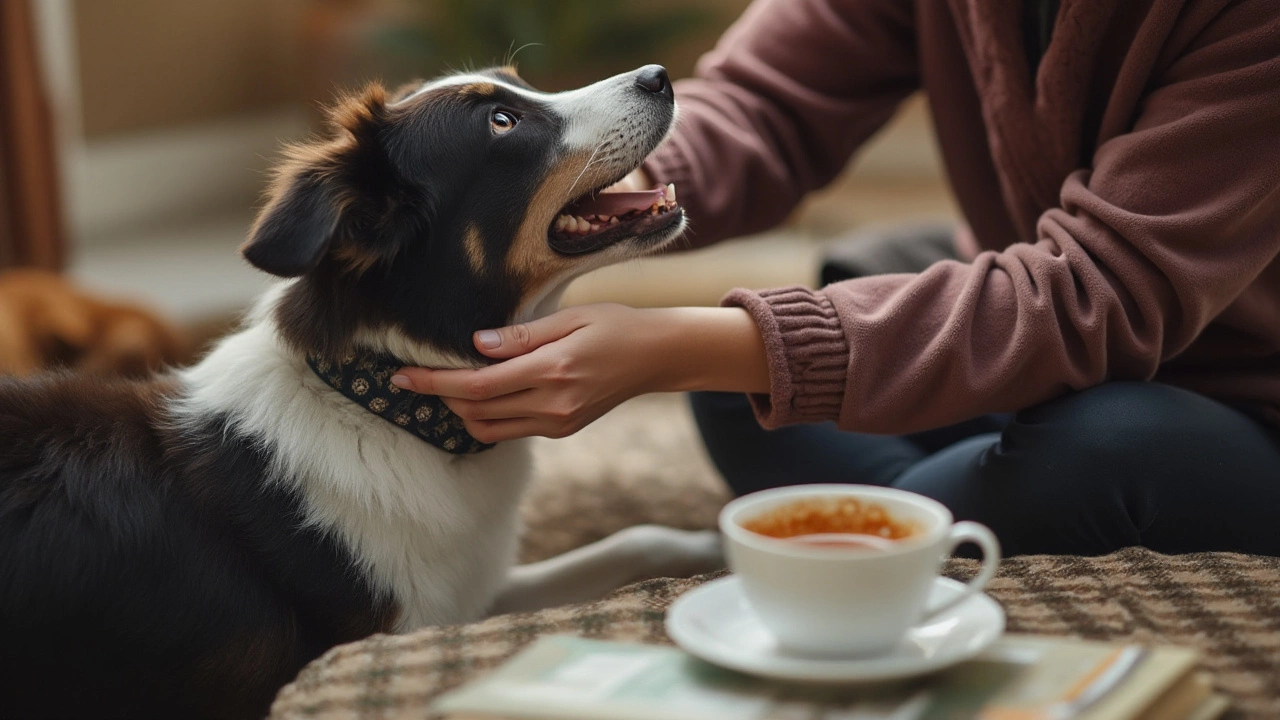
Signs of Discomfort
Recognizing when your dog is uncomfortable with their collar is crucial for their health and happiness. Dogs, like humans, can exhibit physical and behavioral signs when something is amiss. Understanding these signs helps in ensuring that your furry friend is not just safe, but also living comfortably. Many dogs, when faced with discomfort from a poorly fitted or inappropriate collar, may exhibit a range of easily identifiable behaviors.
One of the first signs to look out for is excessive scratching or pawing at the collar area. This behavior often indicates irritation or itching caused by the collar's material or fit. Constant friction can lead to skin redness, rashes, or even hair loss in severe cases. Dogs may also attempt to remove the collar themselves, a clear signal that they are trying to alleviate discomfort. Furthermore, pay attention to any changes in your dog's usual behavior. Sudden lethargy, reluctance to play, or avoiding activities that they typically enjoy, such as walks, might be linked to collar-related issues.
Properly examining your dog's neck is vital in identifying physical signs of discomfort. Check for visible signs like redness, sores, or any unusual marks around the neck caused by a tight collar. “Observing your dog is key. Look for any unusual signs, even when they seem minor,” says Dr. Sarah Thompson, a noted veterinarian. Her advice underscores the importance of knowing your pet’s baseline behavior and how deviations from it can be a significant indicator of discomfort.
It's also important to note that a collar that is too loose can be equally problematic. If a collar hangs too loosely, it may cause chafing or even get caught on objects, potentially injuring your dog. Ensuring a proper fit is critical. The general rule of thumb is that you should be able to place two fingers snugly between the collar and your dog's neck. For specific guidelines on fit, always refer to the manufacturer's instructions, as collars vary widely in design and purpose.
Finally, consider the material of the collar. Some dogs may have allergies or sensitivities to certain fabrics or finishes. Leather collars or those made of natural fibers are often recommended for dogs with sensitive skin. But no two dogs are the same. What works for one might not be suitable for another, making it important to pay attention to each individual dog's needs. Keeping track of any reactions when introducing a new collar material can prevent long-term issues.
Maintaining a Dog's Collar
Maintaining a dog collar is a crucial task that requires attention to detail. This isn't simply about keeping the collar clean; it's about ensuring the continued comfort and safety of your beloved pet. The first step in maintaining a collar is regular inspection. Every week, take a closer look at the collar for signs of wear and tear, such as frayed edges or a damaged buckle. These can pose a risk to your dog, either by causing irritation or by no longer securely fastening the collar.
Cleaning the collar is also an important ritual. Depending on the material, collars can absorb oils from your dog’s skin as well as dirt and water when your pet gets adventurous. Fabric collars are generally machine washable, but it always helps to check the manufacturer's label for specific instructions. For leather collars, a damp cloth followed by a leather conditioner can help maintain their durability and appearance. Dog collars made of synthetic materials should be wiped down with mild soap and water to remove any grime build-up.
“A well-maintained collar is as much about style as it is about your dog's comfort and safety,” says Sarah Jennings, a renowned dog trainer.
Checking the fit of the collar is another key aspect. As your dog grows or their weight fluctuates, the collar may need adjustment. A properly fitting collar should allow you to slip two fingers comfortably between the collar and the dog's neck. If it's too tight, the collar can cause choking or skin irritation. If it's too loose, the collar and tags can become snagged or the dog might slip out of it.
It's also vital to refresh any identification tags attached to the collar. Outdated tags won't be helpful if your pet gets lost. Make sure to double-check the information regularly and replace tags when details like address or phone number change. Some tags also benefit from you applying a coat of clear nail polish to help prevent the inscription from wearing off too quickly. This subtle tip ensures that your furry friend’s ID remains visible for longer.
For responsible pet owners, maintaining a dog's collar is not a one-time task but an ongoing responsibility that plays a pivotal role in the health and wellbeing of their pets. This vigilance ensures that your dog’s accessory serves its purpose while allowing your pet to remain both stylish and safe.
When a collar has outlived its usefulness, it's time to replace it. Have a look at the latest in dog collar designs and materials, which often provide improved comfort and durability. Always prioritize quality and your dog's specific needs when selecting a replacement. Remember, a well-maintained collar contributes positively to a dog’s overall quality of life, acting both as a security feature and as a testament to how much you care about your pet's comfort.
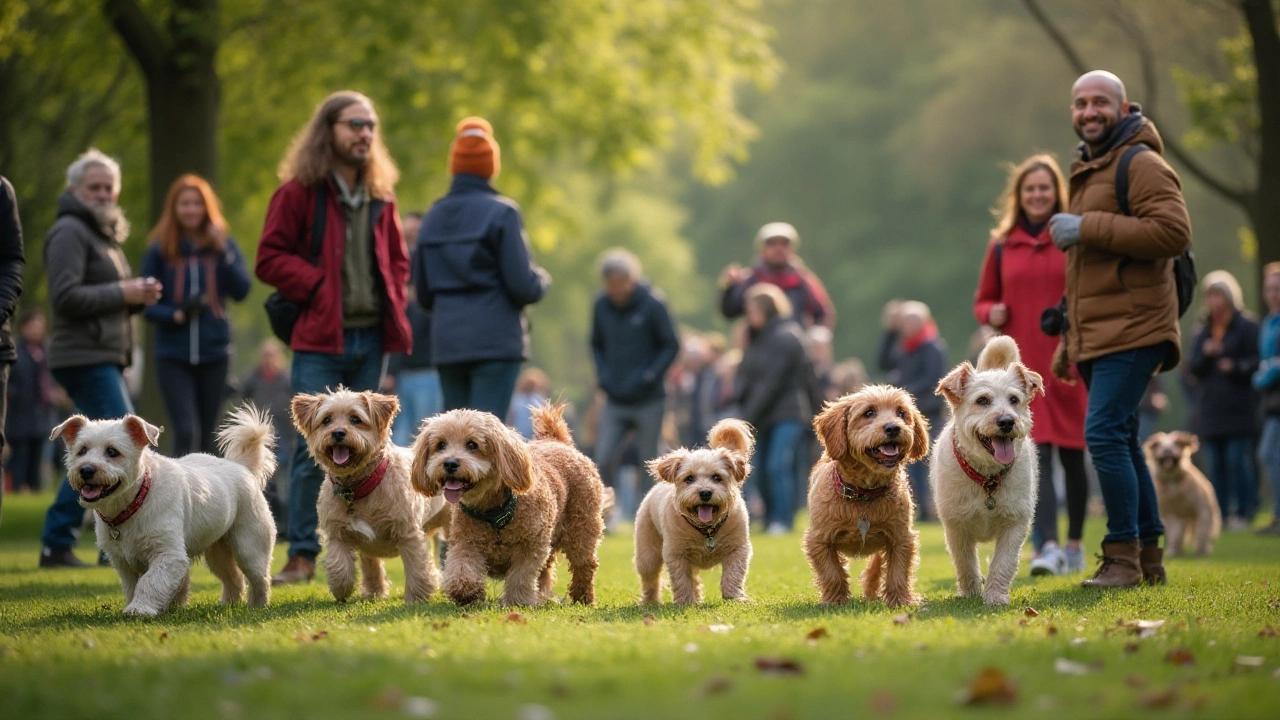
Alternatives to Traditional Collars
In the quest to ensure our pets' comfort and safety, exploring alternatives to traditional collars is a journey many pet owners embark on. Modern pet gear offers a variety of solutions that cater to dogs with different needs and personalities. One increasingly popular option is the harness. Unlike collars, harnesses distribute pressure more evenly over a dog's body, which can prevent injury or discomfort around the neck area. This is especially beneficial for smaller breeds or dogs with respiratory issues that could be exacerbated by pressure on the throat. For active dogs that pull on their leash, a harness provides better control without the risk of choking, making walks more enjoyable for both the dog and owner.
Another intriguing option is the head collar, which looks somewhat similar to a horse's halter. This gear is designed to minimize pulling by guiding the dog's head, offering better steering and control. While some dogs may initially resist a head collar due to its unfamiliar fit, most will adjust with time and patience. This type of collar is particularly helpful for training, as it gently prevents lunging and jumping without the hard impact that can occur with traditional collars. A note of caution: head collars should always be paired with proper training techniques to ensure the dog’s neck isn’t twisted or strained.
According to the American Veterinary Society of Animal Behavior, "appropriate use of head collars, when done with proper training, fosters better communication between pet and owner, emphasizing mutual comfort and safety."
For tech-savvy pet owners, smart collars equipped with GPS tracking and health monitoring features are becoming a trendy choice. These devices go beyond just providing a means of restraint; they offer peace of mind by allowing owners to keep tabs on their pet’s location and health statistics. While their primary purpose is different from a standard collar, they are valuable and offer unique insights into a pet’s activity levels. It’s important, however, to ensure that these devices are not too heavy or uncomfortable for the dog to wear over extended periods.
Innovative Designs and Fit
When traditional collars or their alternatives still seem to fall short, exploring custom-fitted options could be the answer. Some companies specialize in designing collars and harnesses tailored specifically to an individual pet’s measurements, ensuring a snug yet comfortable fit. Materials like neoprene or padded leather can also enhance comfort without sacrificing durability, particularly for dogs with sensitive skin. With an increase in eco-conscious consumers, there are also green alternatives made from recycled materials, providing both comfort and sustainability. These innovative designs emphasize that a smart choice takes into account both function and the wellbeing of your pet.In exploring these alternatives, the key is to regularly evaluate and listen to your pet's signals. Each dog is unique, and what works excellently for one might not suit another. By staying attentive and fluid in exploring various equipment, a harmonious balance between utility and comfort can be achieved, taking into account that pet collars are as much about enhancing lives as they are about enhancing safety.
